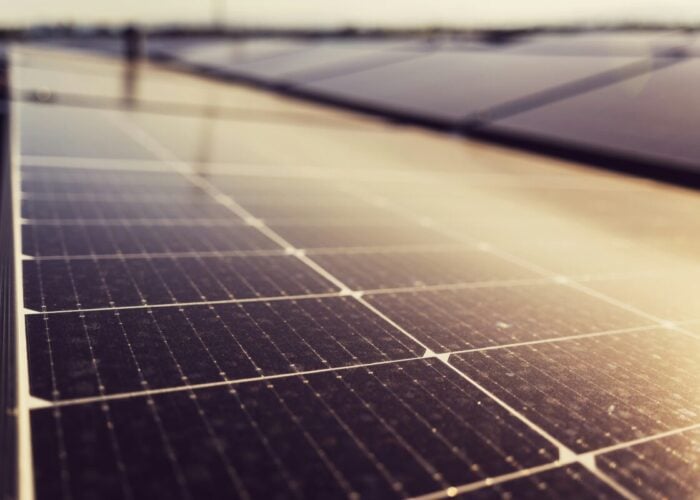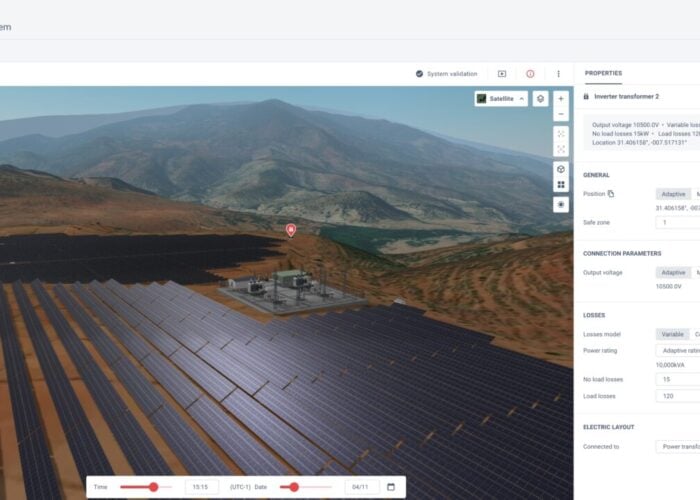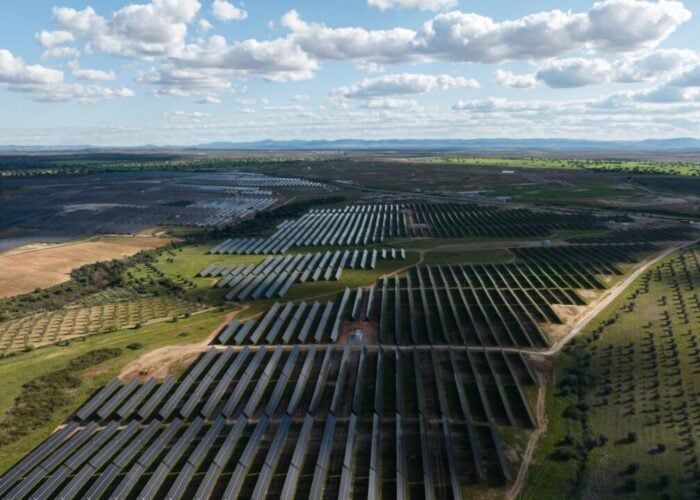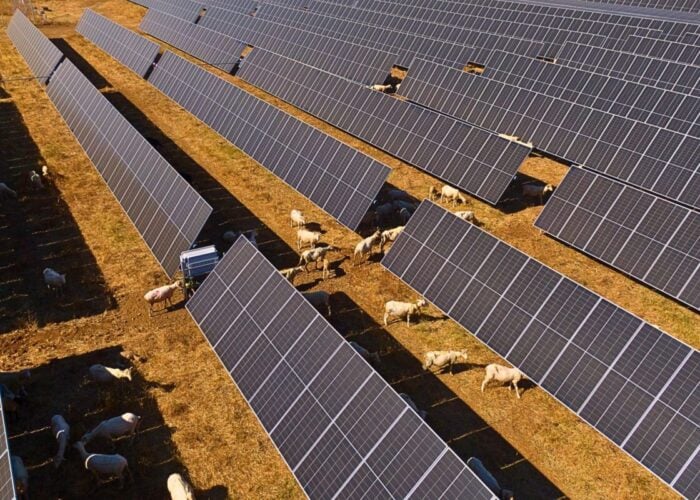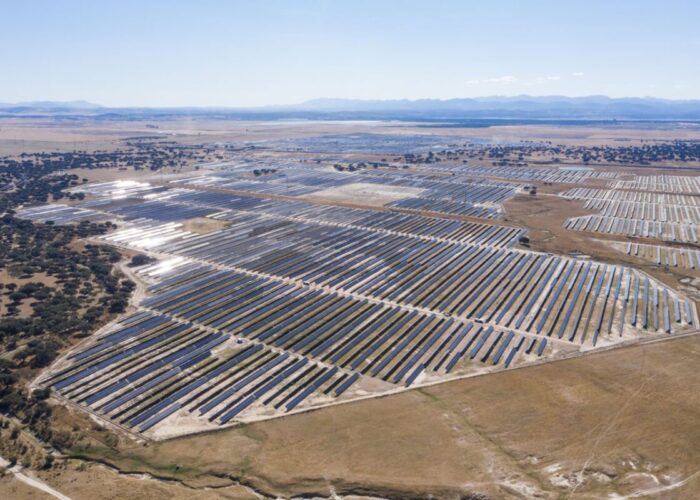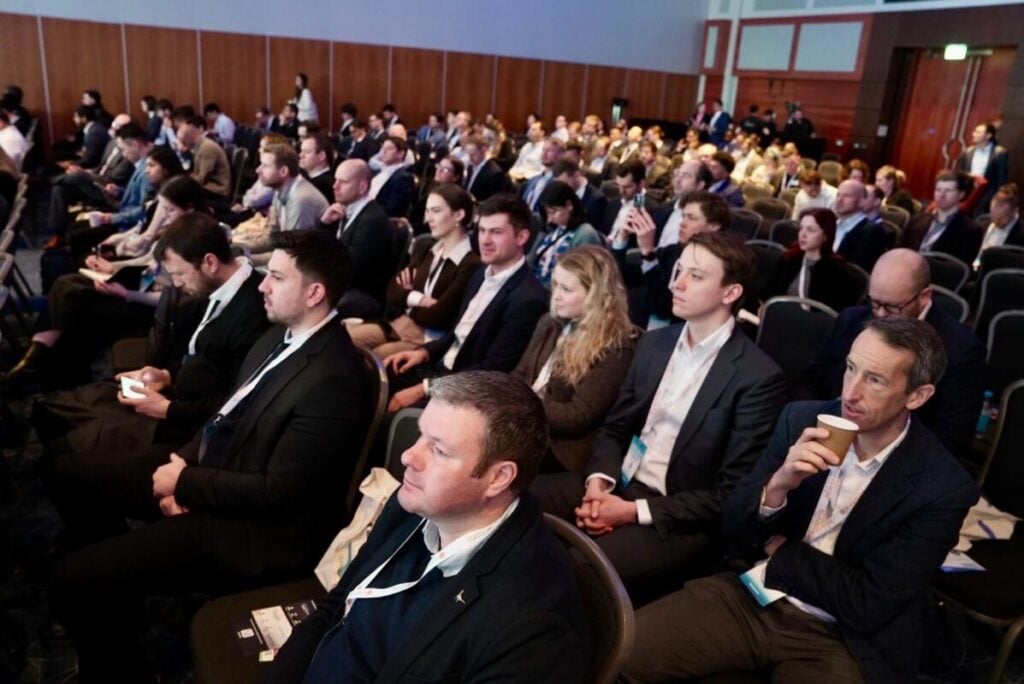
While the co-location of solar and storage projects generally improves their attractiveness to potential investors, individual market dynamics and an investor’s appetite for risk continue to play an important role.
These are some of the conclusions drawn by speakers on a panel on renewables, storage and hedging, held this afternoon at Solar Media’s Energy Storage Summit. Using the example of the UK, Scott Berrie, asset development director at GridBeyond, said that the integration of a battery energy storage system (BESS) would often be considered a useful hedge for investors, but the effectiveness of storage in a particular project is dependent on the market in which the deal is being concluded.
Unlock unlimited access for 12 whole months of distinctive global analysis
Photovoltaics International is now included.
- Regular insight and analysis of the industry’s biggest developments
- In-depth interviews with the industry’s leading figures
- Unlimited digital access to the PV Tech Power journal catalogue
- Unlimited digital access to the Photovoltaics International journal catalogue
- Access to more than 1,000 technical papers
- Discounts on Solar Media’s portfolio of events, in-person and virtual
“I think co-location or standalone BESS are both good hedges under a single, central power price model,” said Berrie, who went on to express skepticism about the effectiveness of the UK government’s Review of Electricity Market Arrangement (REMA) programme.
“What I’d be worried about is whatever REMA is going to do; [whether it will] introduce regional pricing,” Berrie added.
Bharath Kantharaj, investment director of energy storage at Low Carbon, agreed, saying that: “For us, whether it’s from a development point of view or an asset point of view, having solar helps the company’s portfolio … but different market cycles [have an impact].”
Co-location versus standalone
These sentiments echo those shared by speakers at another Solar Media event, Solar Finance & Investment Europe, where delegates suggested that maximising co-located solar and storage projects would be essential to the financial viability of the European renewable power sector.
However, Kantharaj said this afternoon that standalone storage projects have greater financial viability than in markets like the US, an idea that raises questions about the long-term future of solar-plus-storage projects on the continent.
“For us, co-location is to enable standalone storage business models as we see, unlike the US, standalone is awarded more than true hybrids,” said Kantharaj, who said that attitudes towards co-location need to change to encourage greater investment.
“As investors, we’re not at the point where we’re truly valuing co-location, whether it’s for a true co-located project or part of a wider portfolio,” Kantharaj continued. “Today, we’re talking about, in the UK or other parts of Europe, projects largely with standalone operations. I guess the onus is also on us to think about how we value [co-location]; for an independent power producer (IPP) there’s significant value to be added there, but we’re not taking that step forward.”
Investor appetite
The panellists also suggested that the risk appetite for individual investors is a key contributing factor to the attractiveness of solar and storage projects.
“It depends on the risk profile, if you’re an investor, but you might be able to get a higher absolute return with co-location versus standalone solar; or you might be able to get a higher return still with standalone storage,” said Peter Bolton, vice president at Korkia.
“But that might carry a risk profile – and a merchant risk exposure – which returns a return that is higher than is designed to be achieved by the investors,” Bolton continued. “They might want a 10% return for standalone storage – might be higher than that – but they don’t want to play that game; they’re happy to take lower returns for greater certainty.”
These risk profiles are not necessarily a negative phenomenon. Earlier this year, Bart White of Santander told PV Tech that there has been a “very rational” increase in risk appetite among investors in the solar sector, and this may carry over to the co-location space.
Kantharaj, meanwhile, suggested that in the UK, investors in solar-plus-storage projects could see returns on investment in ten years, provided they can accept some of the risks present in the market, such as REMA uncertainty.
“The type of investor you have backing your projects – and their risk profile, versus return requirements – really defines what kind of structure they’ll go for,” said Kantharaj. “Just to throw out numbers, with today’s capex and today’s UK toll, you’d see all-in capex paid back within ten years. Those are some numbers that we’ve done in house.”
The Energy Storage Summit, hosted by our publisher Solar Media, takes place in London, UK, this week (18-19 February). Visit the event site for more details including the agenda and how to get tickets.

